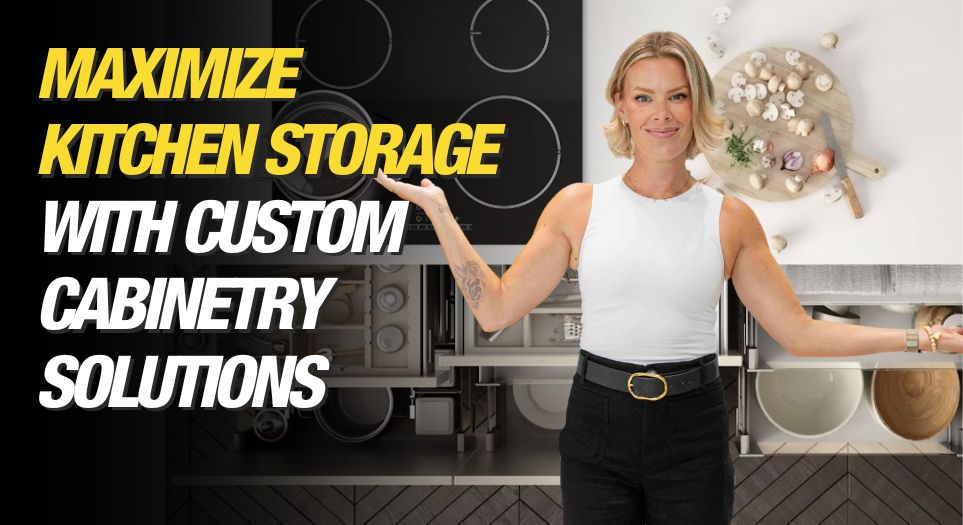Cleaning gutters is one of those chores most homeowners dread—and often put off—but it’s an essential part of protecting your home. Installing gutter guards can significantly cut down on...

7 Interior Design Renovation Tips from Our Show
By Sherry Holmes
Mike’s Advice / Design
Wednesday, May 29th, 2024 @ 1:49pm
Wondering How to Upgrade Your Space? Here Are Some Interior Designer Renovation Tips I’ve Learned From Our Designers Over The Years
Our shows are about helping homeowners who have been dealt a bad hand when it comes to renovations, and on the newer shows we’ve started working closely with interior designers. It’s definitely taken our shows up a level and we love working with our amazing interior designers. Plus, I’ve learned a lot of expert interior design renovation tips and secrets over the years.
I’m a contractor and not a designer, but I have learned so much from working with all the designers on our team. A designer helps you throughout your entire renovation journey whereas an interior decorator focuses primarily on aesthetics.
Here are some essential tips I’ve learned to help you make your renovated space look fabulous!
Tip #1 – Rooms have 5 Walls
The fifth wall was a new concept to me (and I think for my brother and dad too). But when I was told about it, it opened up a whole new way of looking at a room. The fifth wall is the ceiling, and it has so much potential to change a space.
It is literally a blank canvas. It can be as simple as a smooth painted ceiling, which is the norm in modern homes, with a light fixture. Sometimes, it could also be as complex as a coffered ceiling.
Any kind of architectural elements can be incorporated onto a ceiling with crown moulding, or ceiling medallion in older homes, to exposed beams. But don’t write off doing something a bit different, like extending the wallpaper across the ceiling or just wallpaper the ceiling for a completely different look to the space.
You can even create a little fun space for the kids with their own hidden reading nook like we did here.
Here’s another fun idea where we painted the ceiling for a fun kids’ playroom which also made the space feel bigger.
Tip #2 – Never Leave a Wall “Empty”
Of course, there are exceptions to every rule and ultimately it comes down to personal taste and the practicality of the wall in question. However, there are many ways to decorate the walls in your home, ranging from artwork, mirrors, shelves to wallpaper and paint.

John and Lisa are really good people. Family and friends have always come first. John was a tiler and helped everyone do their home but didn’t have the time to do his own. So we stepped in to help them and we couldn’t have done it without the help of the designer we worked with Kim Capone.
I also love a good chalkboard wall especially if you have little kids at home. Who doesn’t love drawing on a chalkboard?
From a designer’s perspective the goal for each room is to create harmony, and balance, and there are endless ways to achieve this.
RELATED
14 Accent Wall Ideas For Your Home
Tip #3 – Don’t Forget to Consider Millwork
Millwork and moulding make a huge difference to any space, especially when you are dealing with a blank uninteresting home. Adding architectural details and trim provides personality, and elegance to any space, costing much less than you think.
This type of woodwork is traditionally done by a finishing carpenter. It requires skill and experience, however simple things can be done as a DIY project. Just remember to take your time. This is a classic example of measuring twice (sometimes three times) and cutting once!

My brother, Michael loves to take on a project for each job we do, whether it’s a modern coffered ceiling, a simple panel or picture frame moulding or custom wall panelling.
This type of wood detailing will definitely up the level of sophistication in the space. The ideas are endless, and most are surprisingly affordable.

This custom millwork was inspired by Toronto’s skyline.
Tip #4 – Switch-out Your Door Hardware
A really inexpensive and impactful way to update your rooms and cabinetry is to switch out the door handles and hardware. Choosing on-trend colours and finishes (like matte black and gold) will make a world of difference, and it’s super fun to shop for the perfect sets.

I love how the gold finishes came together with the green doors on this project.
I love the styles and door hardware finishes from Schlage. They provide high-quality durable door hardware and they even have a line of custom door hardware that allows you to easily change the style, finish and functionality of your door hardware with a simple switch of the cover plates. We use Schlagh in all our jobs!
Tip: Also consider switching out your face plate covers and floor vents (Aria).
RELATED
How to Choose and Install Door Hardware for Your Home
Guide To Selecting a Front Door
Tip #5 – Invest in Local Art and Artists
Don’t get me wrong you can get some really nice mass-produced artwork, but for almost the same price you can support local artists, and start your own original art collection. There are so many options available now, especially with social media.
In many of our episodes, we use existing homeowner artwork as inspiration.

We had so much fun creating this personal wall gallery using the homeowner’s china that was stored for years without being used.
At other times we’ve been introduced to some amazing local artists. Here are some good basic rules when it comes to hanging artwork in your home:
- Wall art should take up a good portion of the available wall space (60 -75%)
- E.g.: 9’ tall x 5’ wide wall would nicely fit a 5 1/2’ to 6 ¾’ tall x 3 to 3 ¾’ wide piece
- E.g.: Over furniture, like a 6’ couch or sofa, a 3/1/2 to 4 ½’ wide would be perfect
- Whether you are doing one piece of artwork or a gallery wall it is best to go big with the space you are occupying. It’s going to make a statement, after all.
- Make sure you leave anywhere from 6 to 12” above any piece of furniture as you want to give space around the artwork.
Designer Tip: If you plan to do a gallery wall, make sure you have a plan. Lay it out on the floor and take your time with the layout before you start hanging the artwork. It will be so much easier with a plan.
Live walls are a great way to bring nature indoors.
Tip #6 – Use the 70/20/10 Rule!
While working with designers I have learnt the concept of the 70/20/10 rule, also known as the 60/30/10 rule. This rule helps you create a layered and textured look to your spaces by using 70% neutral colour, 20% rich colour and 10% accent colour.
The rule makes it easy to establish a focal point and select furniture and accessories. The same rule can be applied to scale, texture, style, lighting, arrangements —almost anything.
Example, in an all-white kitchen, texture from wood could represent 70% of the space with 20% stone, and 10% stainless steel or other metals.

Kitchen project from Holmes Family Rescue Season 1.
In a living space, textures could be 70% smooth, with 20% plush and 10% plush fabrics.

The same principle can be used in lighting a space with 70% ambient, 20% accent and 10% task.
The same principle can be used in lighting a space with 70% ambient, 20% accent and 10% task.
Tip #7 – Avoid Furniture Sets
Now, let me say furniture sets are not all bad. Like when you get your first apartment it’s easy to go and pick out a staged set. It looks great and all the hard work is done for you, right?
But I think I’m on the same page as my designer friends on this one. The best way to furnish a home is by what you really like.

Taking a break on the new sectional in Jason and Alison’s basement.
You want items, colours and a style that reflects you. It’s your home and you spend a lot of time in it. Your home should reflect who you are and you should feel comfortable in it!

That also goes for any furniture you choose for your outdoor backyard. I love the colour of this lounge chair —it’s so bright and summery.
Just like in all design methods, you want your room decor to be a mixture of layers, styles and furnishings, and not too matchy-matchy.
Renovating and refreshing your home can be a lot of fun, and it doesn’t have to be complicated. Try incorporating some of these tips to help you navigate your next renovation or remodelling project.
READ MORE
Ready to Design Your Dream Home? 2024 Top Renovation and Design Trends To Consider
9 Must-Have Design Features For Your Next Bathroom Renovation












